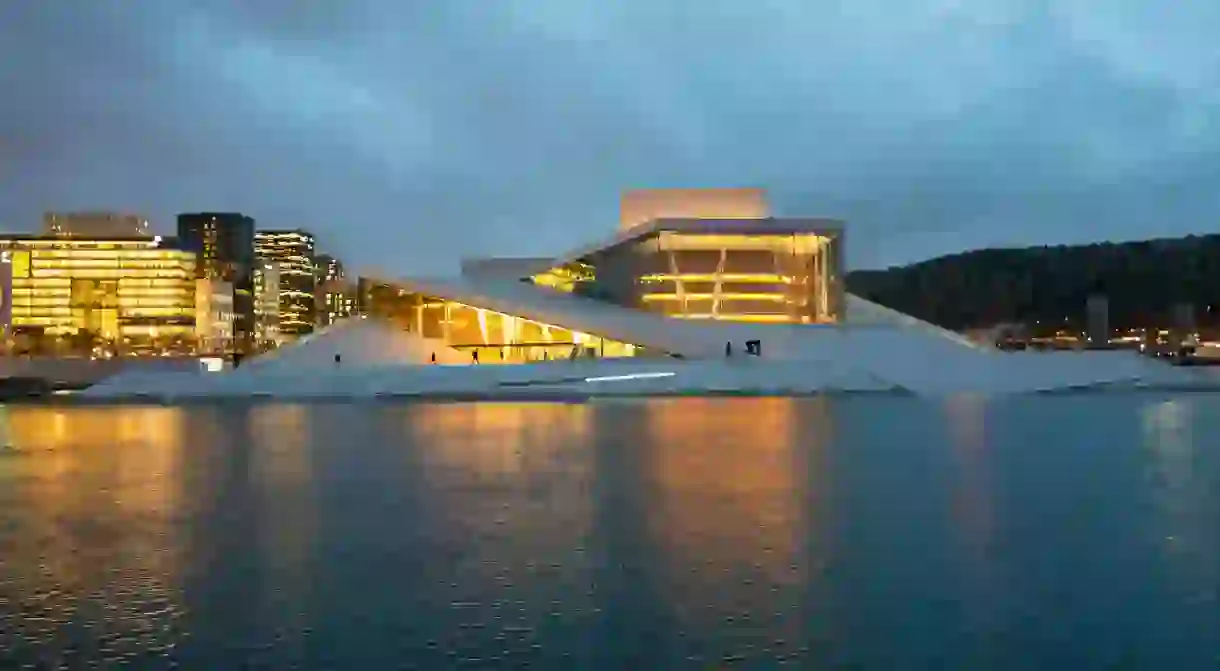A Brief History of Oslo's Opera House

When the Norwegian National Opera & Ballet finally opened its doors in 2008, a century-old dream came true. Today, Oslo’s Opera House is a top attraction and one of the country’s most prominent architectural gems, and the entire building is enjoyed by the city’s inhabitants and visitors alike.
Located in the recently revitalised old industrial area of Bjørvika, the award-winning opera house is one of the first buildings you see when you approach the city from the sea. With its white marble lines sloping gently from its roof into the Oslo Fjord, the building is reminiscent of an iceberg, bridging the space between Norway’s famously astonishing countryside and its capital city.
When the opera house was commissioned in 2000, it fulfilled a century-old wish for the capital of the newly independent nation to house its own national opera. The National Opera & Ballet was established in 1957 and housed at the Folketeatret Theatre, but the institution had to share the space with others. The National Opera’s first director was the internationally renowned soprano Kirsten Flagstad, who paid for the employment of extra singers and musicians out of her own pocket. The square that houses the modern opera house is named after her, and she is honoured today with the statue that you see as you approach the entrance to the building.

The opera house invites visitors to climb its roof year-round, providing a serene place from which to enjoy the sunset during the summer or chat with friends. In winter, the white marble mimics the slabs of ice which fill up the fjord. And that’s just the building’s exterior. Snøhetta, the Norwegian architects responsible its creation, wanted a space which appealed and belonged to everyone.
The large and light lobby is open 24 hours a day and features cafés with beautiful views of the fjord, while large windows make it possible to sneak a peek at the workshops and costume department from outside the building. The three stages are hidden behind an oak façade that complements the metal, glass and lighting details of the interior and breaks up the straight lines and angles, providing lots of intricate details to explore on your own or on a guided tour – don’t miss the impression made by the soundwaves from the orchestra on a cement foundation stone.
While the wait may have been long, the National Opera & Ballet now enjoys some of the most up-to-date staging effects and technology anywhere, and their imaginative array of ballets, operas and orchestral performances has certainly helped put Oslo on the cultural map. As the makers intended, there is something to enjoy for every type of person.

Kirsten Flagstads Plass 1, Oslo, Norway, +47 21 42 21 21













